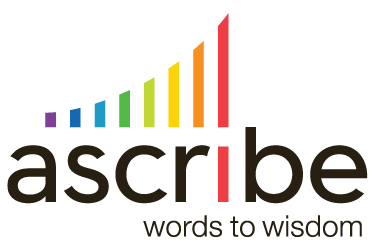You can have the most advanced market research solution in the world, but it won’t be effective if you fail to ask the right questions. The example market research questions featured below will give you a starting point when determining what you should ask your audience and internal stakeholders.
Questions to Ask Consumers
When you send out customer satisfaction surveys, Net Promoter Score surveys, and other initiatives to collect feedback, these questions provide a wealth of market research data.
Basic Demographic Information
Questions that fall under this category include the person’s age, household income, their job title, location, and other standard demographic data. You want to ask questions in this category so you can segment your buyers and learn more about the differences between each group.
Would You Recommend Us to Your Friends and Family?
This question is typically used when you’re conducting Net Promoter Score surveys. You can discover your customer advocates, detractors, and those in-between.
Are You a New Customer or a Returning One?
Gain a better understanding of whether you are retaining customers and driving repeat sales, or if you’re bringing in a higher proportion of people who are new to your brand.
How Long Have You Been Purchasing From Our Company?
If you have repeat customers, you want to get an idea of their lifetime value based on how many purchases they have made and approximately how many purchases they will make in the future. When you build up a highly loyal, long-term audience, you end up in a good position for sustainable business growth.
What Do You Do in Your Free Time?
You can learn a lot about your audience by discovering their hobbies and interests. Discover opportunities that you haven’t considered and new products and services that fit into these areas.
What Sources Do You Use to Learn About New Products and Services?
Do you know where buyers get pre-sales information from? You can identify weaknesses in your content marketing strategy and other parts of the sales funnel with this question. You may need to improve the resources available on your website and collaborate with leading publications and websites in your market.
How Do Our Products and Services Solve Your Problems?
You learn more about common use cases and can potentially identify problems that you haven’t considered. Your audience may end up using your offerings in unexpected ways, leading to new releases and features. They could also use help with the areas that your products overlook. Fill in the gaps and give your customers what they’re really looking for.
What is the Biggest Challenge You Face in Your Life?
Learn more about what challenges your audience faces on a day-to-day basis. You can make improvements to address these areas or move into new markets.
Why Did You Buy Our Products and Services Over a Competitor’s?
Buyers had some reason that they chose your company over others in the market. Find out what that is, whether it matches up to your unique selling proposition, and how you can capitalize on these competitive advantages.
What Do You Enjoy the Most and the Least About Our Products and Services?
Discover your standout features as well as those that aren’t meeting customer expectations.
What Features Would You Like to See Added to Our Products and Services?
Customer feedback can be a great way of putting new features on the roadmap.
How Would You Rate Your Last Experience With Our Brand?
While the overall customer experience with your brand is important, you also want to learn more about each touchpoint. You can discover customer experience trends, dig deeper into isolated bad experiences, or those that point to a need for improvement.
Questions to Ask Internally
Market research and competitive analysis also require asking a number of internal questions. By using customer and internal surveys, you develop a complete picture of the customer experience and engagement of both sets of stakeholders.
What Does the Competitive Landscape Look Like?
This question provides an open-ended opportunity for employees to discuss the marketplace, movers and shakers in the industry, significant product and service releases, changes in technology, business models, and other details that impact your sales potential.
Do Our Current Buyer Personas Serve Our Sales, Marketing and Product Development Needs?
Your audience changes over time and your buyer personas should do the same. If you try to stick with the same set of personas as when you first started your business, you fall behind the competition and create mismatched expectations.
What Products, Services, or Features are Customers Using More Than You Anticipated?
Sometimes products take off unexpectedly, whether they achieve viral success or they become more widely adopted than predicted. You can gain more information on which products are seeing high usage, whether you need to allocate more resources to those offerings, and how you can use the momentum to secure a competitive advantage.
How Does Our Customer Experience Match Up to the Competition?
The customer experience is a critical factor in gaining and growing your customer base. If you don’t know what your competition is doing and how you match up, then you won’t be able to optimize your operations to beat them. Pay close attention to the expectations that leading companies set in your marketplace, if you don’t already hold one of the top spots.
Each customer brings a set of expectations with them when they interact with one of your touchpoints. If you build your sales funnel based on a strong understanding of the typical experience, you can improve on it.
How Can You Adapt to the Changing Needs of Consumers?
The customers you serve today may be significantly different than those who come years later. As the marketplace and technology change, you need to adapt to stay relevant. Have a plan in place to accommodate these needs. Your business processes and infrastructure should be flexible enough to evolve over time
